How AI is Transforming Military Training Systems
The integration of artificial intelligence (AI) into military training systems is nothing short of revolutionary. Imagine a world where soldiers can train in hyper-realistic environments, honing their skills without the risks associated with traditional training methods. This is not just a futuristic dream; it is happening now. AI is reshaping the way armed forces prepare for real-world challenges, providing tools that enhance learning, improve performance, and ensure that military personnel are better equipped for the complexities of modern warfare.
At its core, AI offers a multitude of benefits that streamline and elevate training processes. By leveraging advanced algorithms and data analytics, military training programs can create immersive simulations that replicate combat scenarios with astonishing accuracy. This allows soldiers to practice their responses to various situations—from tactical maneuvers to emergency protocols—without ever stepping onto a battlefield. The result? Soldiers gain invaluable experience and confidence, all while minimizing the risks associated with live training exercises.
Furthermore, the ability of AI to analyze vast amounts of data cannot be overstated. It enables military trainers to assess individual performance in real-time, offering tailored feedback that addresses specific areas for improvement. This data-driven approach not only enhances the training experience but also fosters a culture of continuous learning and adaptation within military ranks. As a result, armed forces worldwide are becoming more agile and responsive to the ever-changing landscape of warfare.
In addition to enhancing simulation technologies, AI is paving the way for personalized learning experiences. Each soldier is unique, possessing different strengths and weaknesses. AI's ability to customize training programs means that every service member receives instruction that is specifically designed to optimize their skill development. This personalization ensures that no one is left behind, creating a more effective and cohesive military unit.
Moreover, AI's impact extends beyond just individual training. The technology fosters adaptive training environments that evolve based on soldiers' performance. This means that as a soldier progresses, their training scenarios become more challenging and relevant, keeping them engaged and prepared for the diverse situations they may face in the field. Such adaptability is crucial in an era where threats are constantly changing and evolving.
As we look to the future, it's clear that the integration of AI into military training systems will only deepen. With advancements in virtual reality (VR) and machine learning on the horizon, we can expect even more sophisticated training tools to emerge. These technologies will not only enhance training effectiveness but also ensure that armed forces remain at the forefront of operational readiness.
- What are the main benefits of AI in military training?
AI enhances simulation technologies, personalizes learning experiences, and provides data-driven performance analysis, leading to improved soldier readiness and effectiveness. - How does AI improve safety in military training?
AI simulates hazardous scenarios without real-world consequences, allowing soldiers to practice emergency responses in a controlled environment. - What future trends can we expect in AI military training?
We can anticipate greater integration of AI technologies, including advancements in virtual reality and machine learning, further enhancing training effectiveness.
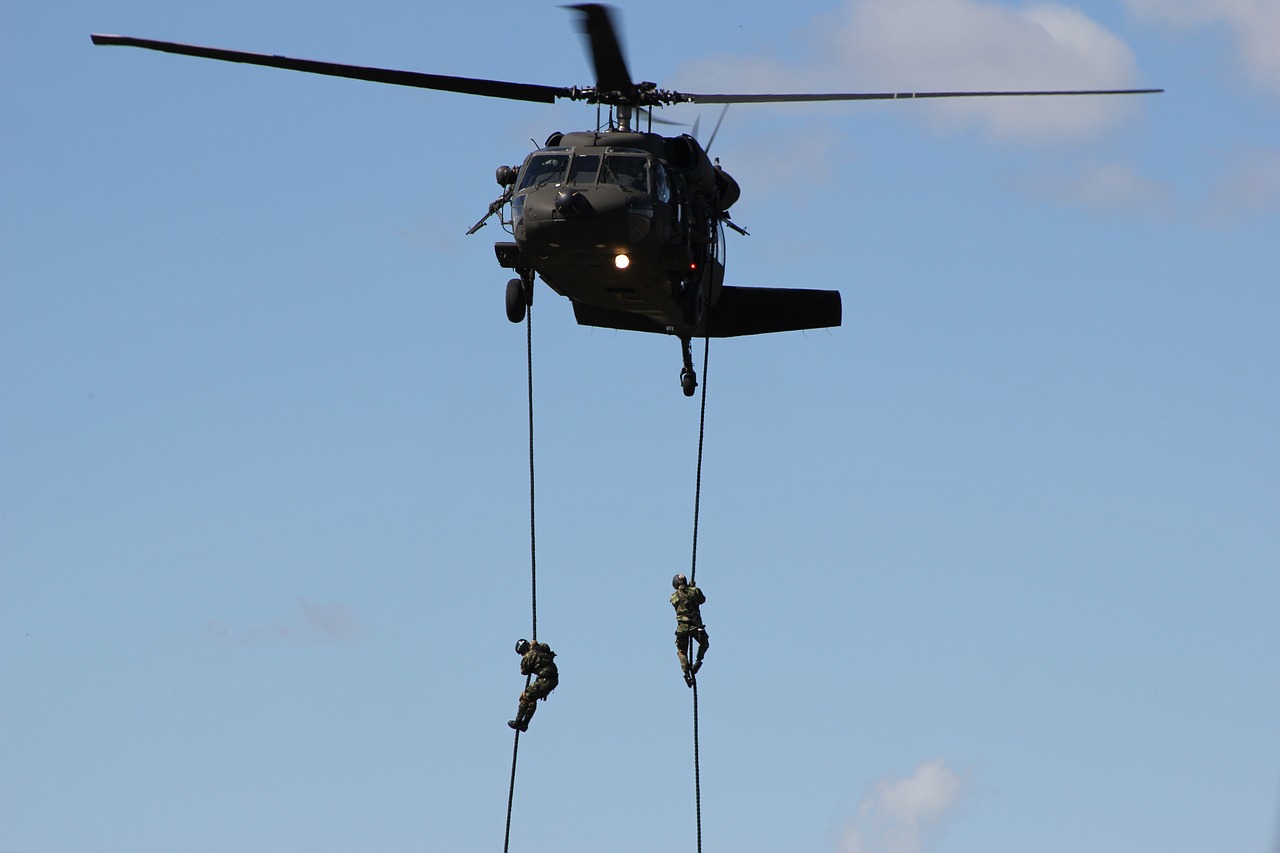
Enhanced Simulation Technologies
In the ever-evolving landscape of military training, AI-driven simulations have emerged as a game-changer, providing soldiers with realistic training environments that mimic the complexities of actual combat scenarios. Imagine stepping into a virtual battlefield where every decision you make could mean the difference between success and failure—all without the inherent risks of real-world operations. This innovative approach not only enhances tactical proficiency but also cultivates critical decision-making skills under pressure.
One of the standout features of these enhanced simulation technologies is their ability to create immersive experiences. By utilizing advanced graphics, sound design, and interactive elements, soldiers can engage in scenarios that closely resemble what they might face in the field. For instance, they might find themselves navigating through a dense urban environment, strategizing to neutralize threats while ensuring the safety of civilians. Such experiences are invaluable, as they teach soldiers to adapt and respond to rapidly changing conditions, much like a seasoned chess player who must anticipate their opponent's next move.
Furthermore, these simulations are not static; they are designed to evolve based on the soldiers' performance. This adaptability is crucial, as it ensures that training remains relevant and challenging. When a soldier successfully navigates a scenario, the AI can introduce new variables, such as unexpected enemy tactics or environmental changes, to test their skills further. This dynamic nature of training keeps soldiers on their toes, preparing them for the unpredictable nature of real combat.
Additionally, the integration of virtual reality (VR) technology takes these simulations to the next level. With VR headsets, soldiers can immerse themselves in a fully 3D environment, enhancing the realism of their training. This technology allows for hands-on practice in a safe setting, where they can make mistakes, learn, and grow without the fear of real-world consequences. It's akin to a pilot using a flight simulator to practice maneuvers before ever taking to the skies.
To further illustrate the benefits of AI-driven simulations, consider the following table that outlines key advantages:
| Advantage | Description |
|---|---|
| Realism | Simulations provide a lifelike experience, preparing soldiers for actual combat. |
| Adaptability | Training scenarios evolve based on performance, ensuring continuous challenge. |
| Safety | Hazardous situations can be practiced without real-world risks. |
| Cost-Effectiveness | Reduces the need for physical training facilities, optimizing resource allocation. |
In conclusion, the integration of AI in military training through enhanced simulation technologies is not just a trend; it is a revolution that is reshaping how armed forces prepare for the complexities of modern warfare. As these technologies continue to advance, we can expect even more sophisticated training environments that will ultimately enhance the effectiveness and readiness of our military personnel.
- What are AI-driven simulations? AI-driven simulations are advanced training environments that use artificial intelligence to create realistic combat scenarios for soldiers.
- How do these simulations improve training? They provide immersive experiences, adaptability, and safe environments for practicing complex decision-making skills.
- Can AI simulations replace traditional training methods? While they enhance training, they are designed to complement traditional methods rather than replace them entirely.
- What technologies are used in enhanced simulations? Technologies such as virtual reality (VR), augmented reality (AR), and sophisticated AI algorithms are commonly used.

Personalized Learning Experiences
Imagine stepping into a training environment that knows you better than your closest friend. in military training, powered by artificial intelligence, are transforming how soldiers develop their skills. Instead of a one-size-fits-all approach, AI analyzes each individual’s strengths, weaknesses, learning pace, and preferences to create a customized training program. This tailored methodology is not just about enhancing performance; it’s about unlocking each soldier's full potential and ensuring they are battle-ready.
For instance, consider a soldier who excels in tactical decision-making but struggles with physical endurance. AI can identify this discrepancy and adjust the training regimen accordingly. By incorporating specific drills that focus on endurance while still challenging their tactical skills, the soldier receives a holistic training experience that promotes overall growth. This method is akin to a coach who understands the unique abilities of each player and tailors training sessions to maximize the team’s performance.
Moreover, the adaptive nature of AI allows for continuous monitoring and adjustments. As soldiers progress through their training, the AI system collects data and analyzes performance metrics in real-time. This means that if a soldier shows significant improvement in a particular area, the system can pivot and introduce more advanced challenges, ensuring that the training remains relevant and engaging. The result? Soldiers are not just going through the motions; they are actively engaged in their learning journey.
But how does this personalized approach translate into real-world effectiveness? Studies have shown that tailored training programs lead to higher retention rates and better performance outcomes. Soldiers who receive customized training are more likely to retain information and apply it effectively in high-pressure situations. This is crucial in military operations where split-second decisions can mean the difference between success and failure.
To illustrate the impact of personalized learning experiences, let’s take a look at a table summarizing the benefits:
| Benefit | Description |
|---|---|
| Enhanced Skill Development | Training is tailored to individual needs, allowing for focused improvement. |
| Increased Engagement | Customized programs keep soldiers motivated and invested in their training. |
| Better Performance Retention | Personalized approaches lead to higher retention of skills and knowledge. |
| Real-Time Adaptation | AI adjusts training based on performance, keeping it relevant and challenging. |
In conclusion, the integration of AI into military training is revolutionizing how soldiers learn and grow. By creating personalized learning experiences, armed forces can ensure that each service member is equipped with the skills necessary to face modern challenges. This not only enhances individual performance but also strengthens the overall effectiveness of military units. As we look to the future, the potential for AI to further refine and improve personalized training is limitless, making it an exciting frontier in military preparedness.
- How does AI personalize military training? AI analyzes individual performance data to tailor training programs that fit each soldier's unique strengths and weaknesses.
- What are the benefits of personalized learning experiences? Benefits include enhanced skill development, increased engagement, better performance retention, and real-time adaptation of training programs.
- Can AI training methods be applied to other fields? Yes, the principles of personalized training through AI can be adapted for various sectors, including education and corporate training.
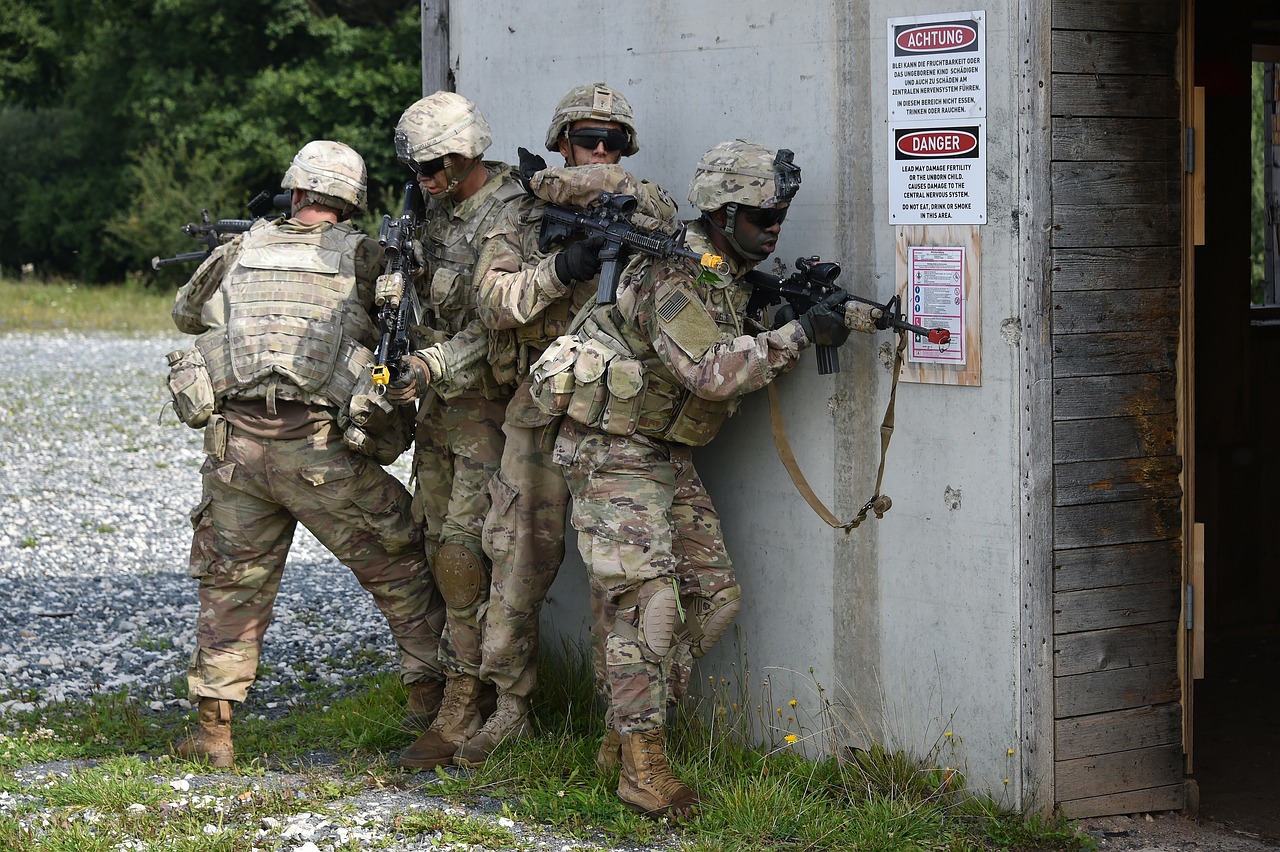
Data-Driven Performance Analysis
In the modern military landscape, where every decision can have significant implications, the use of has emerged as a game-changer. By leveraging the power of artificial intelligence, military training programs can now analyze vast amounts of data generated during training exercises. This analysis is not just about crunching numbers; it’s about gaining profound insights into a soldier's performance, identifying strengths, weaknesses, and areas that need improvement. Imagine being able to pinpoint exactly where a soldier excels or struggles, much like a coach reviewing game footage to refine strategies and enhance player skills.
The process begins with the collection of data from various training activities. This data can include metrics such as reaction times, decision-making speed, and accuracy in simulated scenarios. Once gathered, AI algorithms sift through this information, identifying patterns and trends that might not be immediately apparent to human instructors. For instance, if a soldier consistently performs well under pressure but struggles with strategic planning, targeted training can be developed to bridge that gap. This tailored approach not only optimizes individual performance but also enhances the effectiveness of the entire unit.
Furthermore, the feedback mechanism is revolutionized through this data-driven approach. Instead of waiting for a debriefing session after a training exercise, soldiers can receive immediate, actionable feedback based on their performance metrics. This real-time data allows them to adjust their tactics on the spot, making the learning process dynamic and responsive. To illustrate, consider a soldier who is evaluated on their ability to navigate a complex obstacle course. AI can provide instant feedback on their speed and decision-making, enabling them to refine their approach in real-time, much like a player adjusting their strategy during a game based on the scoreboard.
Moreover, the implications of data-driven performance analysis extend beyond individual training. Military leaders can utilize aggregated data to assess the overall effectiveness of training programs. By analyzing trends across multiple soldiers and units, they can identify which training techniques yield the best results, ultimately leading to more informed decisions about resource allocation and program development. This strategic oversight ensures that military training remains not only effective but also efficient, maximizing the return on investment in terms of time and resources.
In summary, the integration of AI in data-driven performance analysis is transforming military training into a more precise, responsive, and effective process. By harnessing the power of data, armed forces can ensure that every soldier is equipped with the skills and knowledge necessary to excel in high-pressure situations. The future of military training is bright, with AI at the helm, guiding soldiers toward unparalleled levels of readiness and performance.
- What is data-driven performance analysis in military training?
Data-driven performance analysis involves using artificial intelligence to analyze training data, providing insights into soldiers' strengths and weaknesses to enhance their training experience. - How does AI improve feedback during training?
AI allows for real-time feedback during training exercises, enabling soldiers to make immediate adjustments to their tactics based on performance metrics. - Can data-driven analysis help improve overall military efficiency?
Yes, by identifying effective training techniques and optimizing resource allocation, data-driven analysis can enhance overall military efficiency and effectiveness. - What types of data are collected for performance analysis?
Data collected can include reaction times, decision-making speed, accuracy in exercises, and other performance metrics relevant to training scenarios.

Real-Time Feedback Mechanisms
The integration of into military training systems has been nothing short of revolutionary. Imagine a training scenario where soldiers are not only engaged in complex simulations but are also receiving immediate insights about their performance as they navigate through these challenges. This approach fundamentally transforms the learning experience, allowing for adjustments to be made on the spot. Instead of waiting for a debriefing session after the exercise, soldiers can refine their tactics in real-time, leading to enhanced learning outcomes.
One of the most compelling aspects of real-time feedback is its ability to create a dynamic learning environment. For instance, when a soldier makes a tactical error during a simulated mission, the AI system can instantly analyze the situation and provide corrective suggestions. This kind of immediate intervention helps soldiers understand their mistakes and learn the correct strategies without the pressure of real-world consequences. It’s like having a personal coach who is always there, ready to guide you through every step of your training.
Moreover, real-time feedback mechanisms are not just beneficial for the soldiers; they also empower instructors. With AI analyzing the training exercises, instructors can focus on the broader strategy and overall team dynamics, rather than getting bogged down in minute details. This allows for a more holistic approach to training, where both individual and collective performance can be assessed simultaneously. Instructors can then utilize this data to tailor their teaching methods, ensuring that every soldier receives the guidance they need to excel.
To illustrate the impact of real-time feedback, consider the following table that summarizes key benefits:
| Benefit | Description |
|---|---|
| Immediate Corrections | Soldiers can adjust their tactics instantly based on feedback, enhancing learning and retention. |
| Enhanced Instructor Focus | Instructors can concentrate on broader strategies while AI manages performance details. |
| Increased Confidence | Real-time guidance fosters a supportive learning environment, boosting soldiers' self-assurance. |
| Data-Driven Insights | Continuous performance data allows for more informed decisions regarding training adjustments. |
In conclusion, the deployment of real-time feedback mechanisms in military training not only accelerates the learning process but also cultivates a culture of continuous improvement. Soldiers are better prepared for the unpredictability of real combat situations, and instructors are equipped with valuable insights that enhance the overall training experience. As we move forward, the importance of these mechanisms will only grow, paving the way for more effective and efficient military training programs.
- What is real-time feedback in military training? Real-time feedback refers to immediate insights and corrections provided to soldiers during training exercises, allowing them to adjust their tactics on the spot.
- How does AI facilitate real-time feedback? AI analyzes performance data in real-time and provides suggestions or corrective measures to soldiers and instructors during training scenarios.
- What are the benefits of real-time feedback? Benefits include immediate corrections, enhanced instructor focus, increased confidence among soldiers, and data-driven insights for better training adjustments.
- Can real-time feedback improve overall military readiness? Yes, by preparing soldiers for unpredictable situations and enhancing their decision-making skills, real-time feedback contributes significantly to overall military readiness.

Longitudinal Performance Tracking
Longitudinal performance tracking represents a groundbreaking approach in military training, leveraging the power of artificial intelligence to monitor and evaluate soldiers' progress over time. Imagine having a personal coach who not only observes your performance but also provides tailored insights based on your strengths and weaknesses. This is precisely what AI offers to military training programs. By continuously analyzing data collected during various training exercises, AI systems can create a comprehensive profile of each soldier, identifying patterns and trends that might not be visible through traditional assessment methods.
One of the most significant advantages of longitudinal performance tracking is its ability to provide actionable insights. For instance, if a soldier consistently struggles with a particular tactical maneuver, the AI can flag this issue, prompting instructors to intervene with targeted training sessions. This proactive approach ensures that no soldier is left behind, fostering a culture of continuous improvement. Moreover, the data-driven nature of this tracking allows military leaders to make informed decisions regarding promotions, specialized training assignments, and even team compositions based on individual performance metrics.
To illustrate this concept further, consider the following table that outlines how longitudinal tracking can influence training outcomes:
| Performance Metric | Traditional Assessment | AI-Driven Tracking |
|---|---|---|
| Skill Acquisition Rate | Periodic evaluations | Continuous monitoring and feedback |
| Identification of Weaknesses | End-of-course evaluations | Real-time performance analysis |
| Training Adjustments | Reactive changes | Proactive adaptations |
Additionally, the longitudinal performance tracking system fosters a sense of accountability among soldiers. When individuals know their progress is being monitored closely, they are more likely to stay engaged and motivated throughout their training. This heightened sense of responsibility can lead to improved morale and camaraderie within units, as soldiers support one another in their development journeys. The journey of growth becomes a shared experience, enhancing teamwork and operational effectiveness.
In conclusion, the integration of longitudinal performance tracking into military training not only enhances individual soldier development but also contributes to the overall effectiveness of armed forces. By harnessing the capabilities of AI, military organizations can ensure that their personnel are not only prepared for the challenges they face but are also continually evolving to meet the demands of modern warfare.
- What is longitudinal performance tracking?
Longitudinal performance tracking is a method of continuously monitoring and analyzing a soldier's performance over time, using AI to identify strengths, weaknesses, and trends to enhance training outcomes.
- How does AI improve training assessments?
AI provides real-time data analysis, enabling instructors to deliver immediate feedback and make proactive adjustments to training programs based on individual performance metrics.
- Can longitudinal tracking influence promotions?
Yes, the insights gained from longitudinal tracking can aid military leaders in making informed decisions regarding promotions and specialized training assignments.
- What are the benefits of using AI in military training?
AI enhances training through personalized learning experiences, improved safety protocols, efficient resource management, and the ability to simulate complex scenarios without real-world risks.
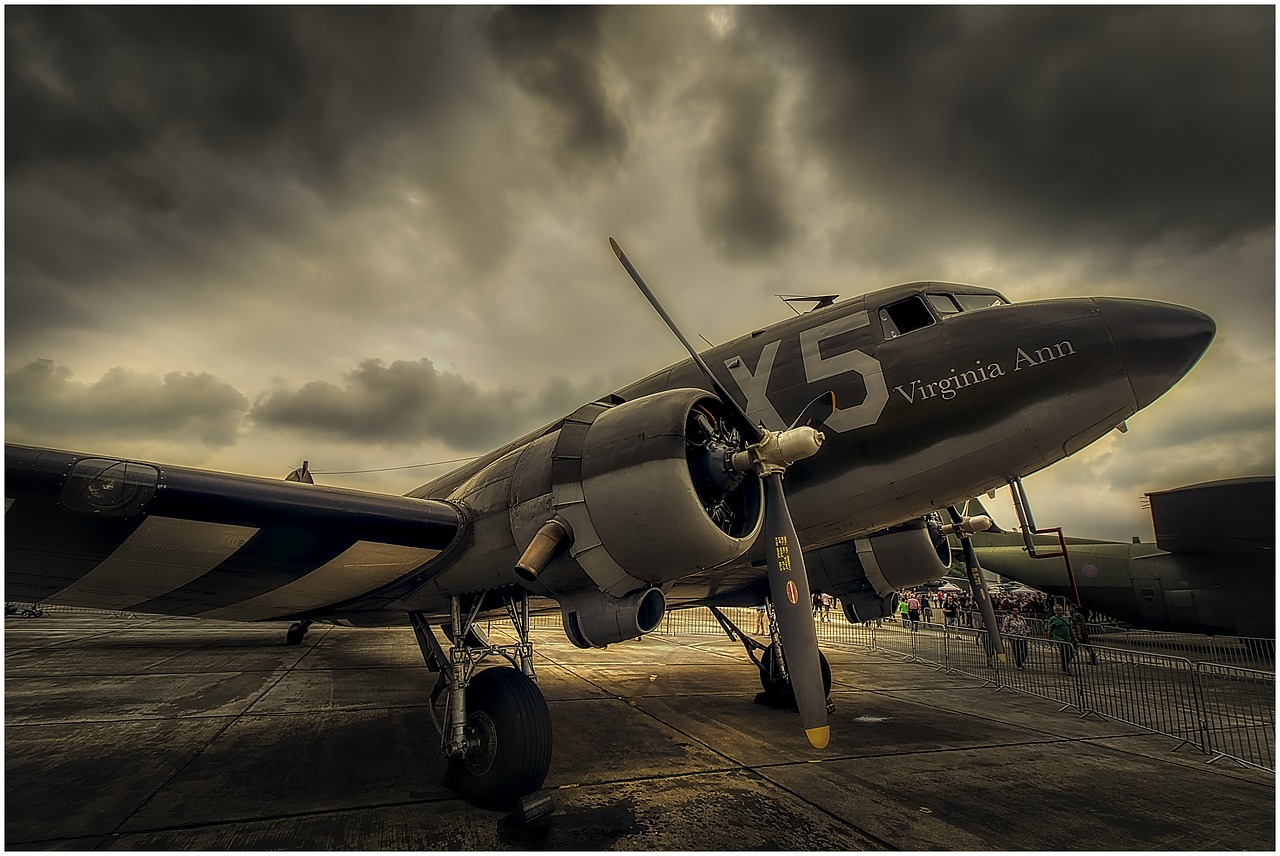
Adaptive Training Environments
In the ever-evolving landscape of military training, powered by artificial intelligence are emerging as game-changers. Imagine a training ground that morphs and shifts in response to a soldier's performance—this is not science fiction; it's the future of military preparedness. These environments utilize advanced algorithms to assess the skills and capabilities of individual service members in real-time, creating a dynamic training experience tailored specifically to their needs.
The beauty of adaptive training lies in its ability to provide a personalized approach to skill development. For instance, if a soldier excels in tactical maneuvers but struggles with communication during high-pressure scenarios, the AI can adjust the training modules accordingly. This ensures that soldiers are not only honing their strengths but also addressing their weaknesses. As a result, each training session becomes a unique journey that evolves based on the soldier's progress, much like a video game that adapts to the player's skill level.
Moreover, adaptive training environments foster a sense of realism and urgency that traditional training methods often lack. By simulating unpredictable conditions—such as sudden changes in enemy tactics or environmental challenges—soldiers learn to think on their feet and make quick decisions under pressure. This immersion is critical; it prepares them for the chaotic realities of combat, where adaptability can be the difference between success and failure.
Additionally, these environments can incorporate various technologies, including virtual and augmented reality, to enhance the training experience further. For example, soldiers might find themselves in a virtual battlefield where they must navigate through complex terrains while facing simulated threats. The AI monitors their actions, providing feedback and adjusting the scenario based on their performance. This kind of training not only boosts confidence but also ingrains essential skills that are vital on the battlefield.
To illustrate the effectiveness of adaptive training environments, consider the following table that highlights key benefits:
| Benefit | Description |
|---|---|
| Personalization | Tailors training content to individual soldier's strengths and weaknesses. |
| Realism | Simulates unpredictable combat scenarios for practical experience. |
| Continuous Feedback | Provides immediate insights into performance, allowing for real-time adjustments. |
| Enhanced Readiness | Prepares soldiers for diverse situations, improving overall operational readiness. |
In summary, adaptive training environments represent a significant leap forward in military training methodologies. By leveraging AI technology, these environments offer a tailored, immersive, and highly effective training experience that prepares soldiers for the unpredictable nature of modern warfare. The future of military training is not just about learning; it's about evolving, adapting, and thriving in the face of challenges.
- What is an adaptive training environment?
An adaptive training environment is a training system that adjusts the content and scenarios based on the individual performance of soldiers, using AI technology to create a personalized training experience. - How does AI contribute to military training?
AI enhances military training by providing real-time feedback, personalizing training programs, and simulating complex scenarios that prepare soldiers for real-world challenges. - What are the benefits of using adaptive training?
Benefits include improved personalization, enhanced realism, continuous feedback, and better overall readiness for diverse operational scenarios. - Can adaptive training environments improve soldier performance?
Yes, by tailoring training to individual needs and providing realistic scenarios, adaptive training environments can significantly enhance soldier performance and confidence.

Cost-Effectiveness and Resource Management
The integration of artificial intelligence (AI) into military training systems is not just a technological upgrade; it’s a game-changer in terms of cost-effectiveness and resource management. Imagine a world where training costs are slashed, yet the quality of training skyrockets. Sounds too good to be true? Well, that’s the reality AI brings to the table. By optimizing resource allocation, AI minimizes waste and maximizes efficiency, making every dollar spent count. This is especially crucial in the military, where budgets are often tight and resources scarce.
One of the most significant advantages of AI in military training is its ability to reduce the need for physical training facilities. Traditional training often requires extensive infrastructure—think training ranges, simulators, and classrooms. With AI-driven simulations, soldiers can train anywhere, anytime, using virtual environments that replicate real-world scenarios. This flexibility not only cuts down on costs associated with maintaining physical facilities but also allows for a more dynamic training schedule, adapting to the needs of the troops.
Furthermore, AI can help streamline the training process, reducing the overall training time required for soldiers to become operationally ready. By analyzing individual performance data, AI can identify specific areas where a soldier may struggle, allowing for targeted interventions that speed up the learning curve. This means that military units can achieve their readiness goals faster, which is crucial in today’s fast-paced operational environment.
To illustrate the potential cost savings, consider the following table that outlines the traditional training costs versus AI-enhanced training costs:
| Training Type | Traditional Costs | AI-Enhanced Costs |
|---|---|---|
| Physical Facilities | $500,000 | $100,000 |
| Instructor Fees | $200,000 | $50,000 |
| Equipment Maintenance | $150,000 | $30,000 |
| Total | $850,000 | $180,000 |
As you can see, the potential savings are staggering. But it’s not just about cutting costs; it’s also about reallocating resources to where they’re needed most. With AI, military leaders can make data-driven decisions about where to invest their training budgets, ensuring that funds are directed towards the most effective training programs.
Moreover, AI enhances resource management by providing insights into training effectiveness. By analyzing data from training exercises, military leaders can determine which programs yield the best results and which ones need to be revamped or eliminated. This level of insight was previously unattainable, but with AI, it becomes a straightforward task. It empowers military organizations to be more strategic in their training investments, ultimately leading to a more skilled and prepared force.
In conclusion, the adoption of AI in military training systems represents a significant leap forward in cost-effectiveness and resource management. By reducing costs, streamlining processes, and enabling data-driven decision-making, AI is not just enhancing how soldiers train; it’s revolutionizing the entire military training landscape.
- How does AI improve military training? AI enhances military training by providing realistic simulations, personalized learning experiences, and data-driven performance analysis.
- What are the cost savings associated with AI in military training? AI can significantly reduce costs related to physical facilities, instructor fees, and equipment maintenance, leading to substantial overall savings.
- Can AI adapt training programs for individual soldiers? Yes, AI can tailor training programs to meet the unique needs of each soldier, optimizing their skill development.
- What is the future of AI in military training? The future will likely see even greater integration of AI technologies, including advancements in virtual reality and machine learning.
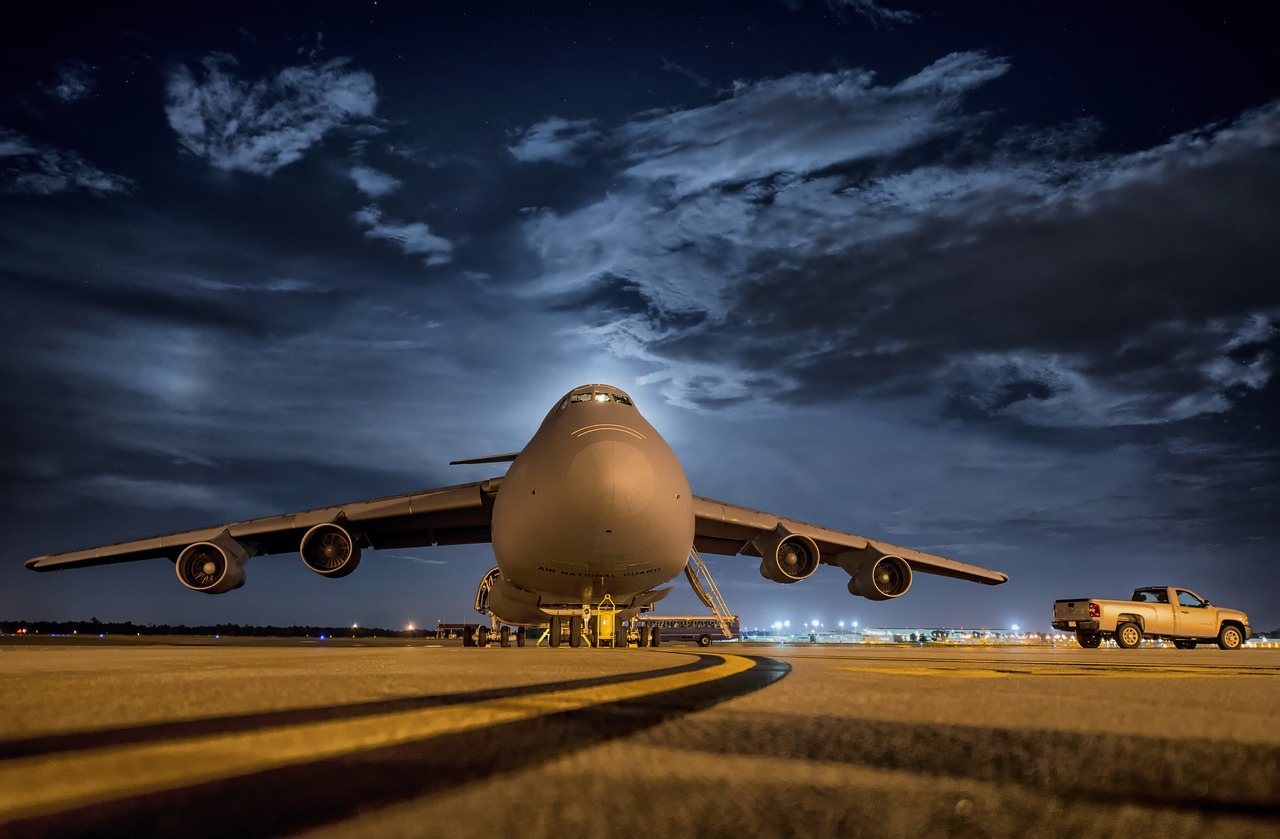
Reduction of Training Time
In the fast-paced world of military operations, time is often of the essence. The integration of artificial intelligence (AI) in military training systems has revolutionized the way armed forces approach skill acquisition, leading to a remarkable reduction in training time. By leveraging AI technologies, military units can streamline training processes, enabling soldiers to learn crucial skills more efficiently than ever before.
Imagine a scenario where a soldier is required to master complex tactical maneuvers. Traditionally, this could take weeks or even months of rigorous training. However, with AI-driven simulations, soldiers can engage in realistic training exercises that adapt to their learning pace. This means that instead of spending endless hours on repetitive drills, they can focus on honing their skills in a dynamic environment that responds to their actions.
One of the key advantages of AI is its ability to analyze performance in real-time. For instance, during a simulated mission, AI can identify areas where a soldier struggles and provide targeted feedback immediately. This immediate response not only enhances learning but also allows soldiers to correct mistakes on the spot, significantly shortening the time needed to achieve proficiency.
Furthermore, AI facilitates the creation of personalized training programs. Each soldier has unique strengths and weaknesses, and AI can tailor scenarios that challenge them appropriately. This personalized approach ensures that time is not wasted on unnecessary drills, allowing soldiers to concentrate on the skills they need to develop. In essence, the training becomes more about quality over quantity, leading to faster skill acquisition.
To illustrate the impact of AI on training time reduction, consider the following table:
| Traditional Training Method | AI-Enhanced Training Method | Time Saved |
|---|---|---|
| Standard drills and exercises | Adaptive simulations with real-time feedback | 30-50% |
| Review sessions for performance analysis | Instant performance analytics | 40-60% |
| Repetitive training on basic skills | Personalized training modules | 20-40% |
This table showcases just a few areas where AI can drastically reduce the time spent on various training aspects. By employing these advanced technologies, military organizations can ensure that soldiers are not only well-prepared but also ready to respond to real-world challenges more swiftly.
In conclusion, the reduction of training time through AI integration is a game changer for military forces. It allows them to maintain a state of readiness while optimizing their training resources. As the landscape of warfare evolves, embracing these technological advancements will be crucial for staying ahead of the curve. With AI, the future of military training looks promising, and the benefits of reduced training time will undoubtedly enhance operational effectiveness.
- How does AI reduce training time in military settings? AI streamlines training by providing real-time feedback, personalizing learning experiences, and creating adaptive simulations that respond to individual performance.
- What are some examples of AI technologies used in military training? Examples include virtual reality simulations, machine learning algorithms for performance analysis, and AI-driven adaptive learning platforms.
- Can AI training methods replace traditional training entirely? While AI enhances training efficiency, traditional methods still play a vital role in developing foundational skills and fostering teamwork.
- What is the impact of reduced training time on military readiness? Reduced training time allows military units to become operational more quickly, improving overall readiness and effectiveness in real-world scenarios.

Improved Safety Protocols
In the ever-evolving landscape of military training, have become a cornerstone of effective preparation for real-world operations. With the integration of artificial intelligence (AI), training scenarios can now simulate hazardous situations without placing soldiers in actual danger. This revolutionary approach allows service members to engage in high-stakes environments, honing their responses and decision-making skills while remaining safe. Imagine being able to practice a combat situation where you can make mistakes without the fear of real-life consequences; that’s the power of AI in military training.
One of the standout features of AI-driven training systems is their ability to create realistic simulations. These simulations can replicate everything from battlefield conditions to emergency response situations, providing soldiers with invaluable experience. For instance, a soldier might find themselves in a simulated hostage rescue scenario, where they must navigate complex variables such as time constraints, environmental challenges, and the psychology of the hostage-taker. By practicing in such a controlled yet realistic environment, soldiers can develop their skills and confidence without the inherent risks of live training exercises.
Moreover, AI can analyze the performance of soldiers during these simulations, offering immediate feedback on their actions. This feedback loop is crucial; it enables soldiers to understand what they did right and where they can improve, all in real-time. For example, if a soldier hesitates during a critical moment, the AI can highlight this hesitation and suggest strategies to overcome it in future scenarios. This kind of feedback not only enhances individual performance but also contributes to overall unit effectiveness.
To further enhance safety, AI systems can be programmed to monitor physiological responses during training exercises. By tracking factors such as heart rate and stress levels, these systems can identify when a soldier is becoming overwhelmed or fatigued. In such cases, the AI can adjust the training scenario accordingly, ensuring that the soldier remains within a safe operational capacity. This adaptability is akin to having a personal trainer who knows when to push you and when to ease off, making the training both challenging and safe.
Additionally, AI can help in establishing comprehensive safety protocols that are continuously updated based on the latest data and trends. By analyzing past incidents and training outcomes, AI can identify potential risks and suggest preventative measures, creating a safer training environment. For instance, if a particular training exercise has a history of causing injuries, the AI can recommend modifications to the exercise or even substitute it with a safer alternative.
In conclusion, the integration of AI into military training not only enhances the learning experience but also significantly improves safety protocols. By providing realistic simulations, immediate feedback, physiological monitoring, and data-driven safety recommendations, AI ensures that soldiers are well-prepared for the challenges they may face in the field, all while minimizing risks. This innovative approach is transforming the way military training is conducted, making it safer and more effective than ever before.
- How does AI improve safety in military training?
AI enhances safety by providing realistic simulations, immediate feedback, and monitoring physiological responses to prevent fatigue or overwhelm. - Can AI replace traditional training methods?
No, AI complements traditional training methods by adding layers of realism and adaptability, making training more effective. - What types of scenarios can AI simulate?
AI can simulate a wide range of scenarios, including combat situations, emergency responses, and hazardous environments. - How does AI provide feedback to soldiers?
AI analyzes soldiers' performance during simulations and offers real-time feedback on their actions, helping them improve continuously.
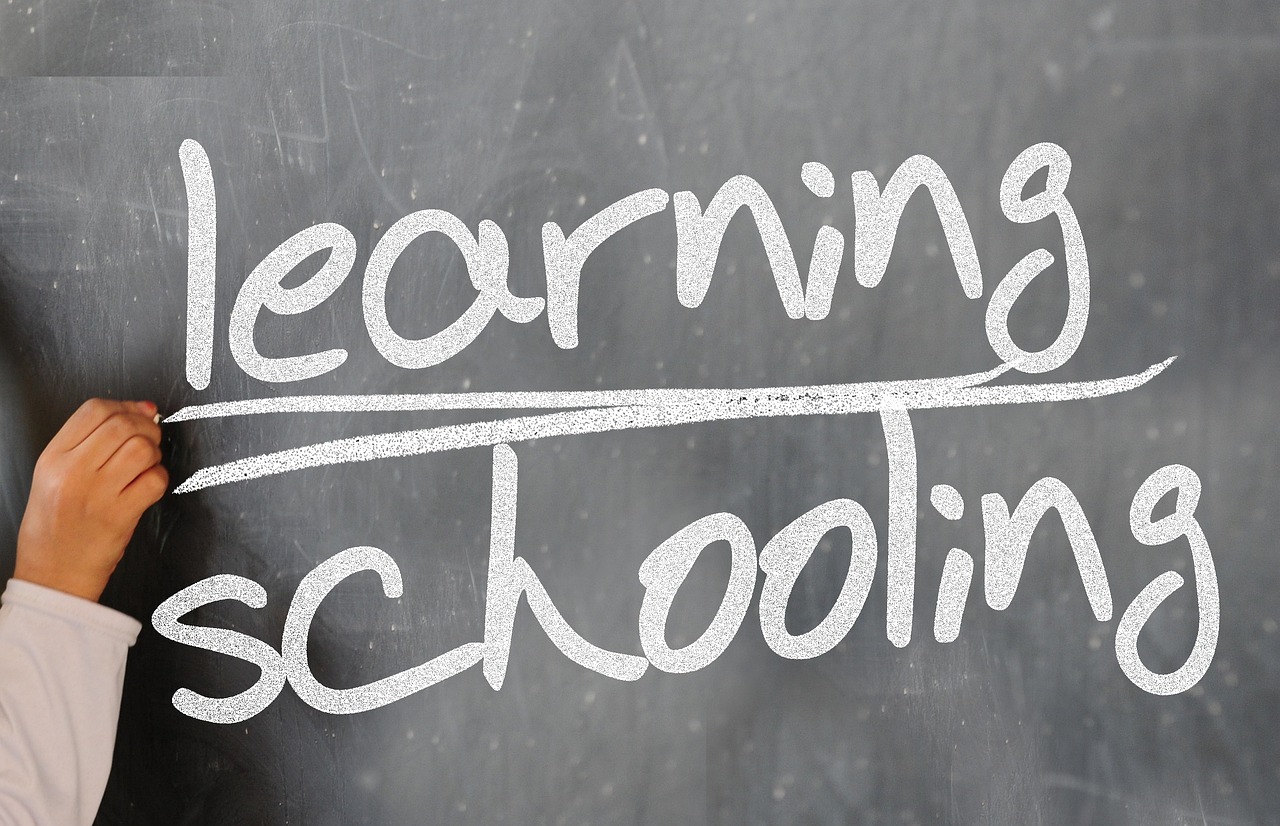
Future Trends in AI Military Training
This article explores the revolutionary impact of artificial intelligence on military training, examining its benefits, challenges, and future implications for armed forces worldwide.
AI-driven simulations provide realistic training environments, allowing soldiers to experience complex scenarios without real-world risks. These technologies improve decision-making and tactical skills through immersive experiences.
AI tailors training programs to individual soldiers' needs, optimizing skill development and retention. This personalized approach ensures that each service member receives training suited to their unique strengths and weaknesses.
AI analyzes training data to assess soldiers' performance, identifying areas for improvement. This data-driven approach enhances feedback mechanisms, enabling more effective training interventions and strategies.
With AI, instructors can provide immediate feedback during training exercises, allowing soldiers to adjust their tactics on the fly. This real-time guidance enhances learning outcomes and boosts confidence.
AI systems can track soldiers' progress over time, providing insights into their development. This longitudinal analysis helps military leaders make informed decisions about promotions and specialized training needs.
AI creates adaptive training environments that evolve based on soldiers' performance. This flexibility ensures that training remains relevant and challenging, preparing troops for diverse real-world scenarios.
Implementing AI in military training can lead to significant cost savings by optimizing resource allocation and reducing the need for physical training facilities. This efficiency allows for more effective use of defense budgets.
AI technologies streamline training processes, enabling faster skill acquisition. This reduction in training time allows military units to become operational more quickly, enhancing overall readiness.
AI enhances safety in training by simulating hazardous scenarios without real-world consequences. This capability allows soldiers to practice emergency responses in a controlled environment, improving safety preparedness.
The future of military training is poised for an exciting evolution, driven by the continuous advancements in artificial intelligence. As we look ahead, several key trends are expected to shape the landscape of military training:
- Integration of Virtual Reality (VR): The combination of AI with VR technology will create even more immersive training experiences. Imagine soldiers stepping into a fully simulated battlefield where they can practice real-time decision-making in a lifelike environment.
- Machine Learning Enhancements: Machine learning algorithms will become more sophisticated, allowing AI systems to learn from each training session. This means that the training programs will continuously improve based on soldiers’ performances, ensuring that they are always challenged and engaged.
- Collaborative Training Environments: Future training scenarios will likely involve collaboration between various military branches and allied forces. AI will facilitate these joint exercises, enabling seamless communication and strategy development across different units.
Moreover, the data collected from these advanced training systems will not only enhance individual soldier performance but will also contribute to broader strategic insights for military leaders. By analyzing patterns and outcomes from training exercises, military organizations can refine their operational strategies and readiness.
In essence, the integration of AI in military training is not just about enhancing the skills of individual soldiers; it’s about transforming the entire approach to military readiness. As technology progresses, we can expect to see a military that is more adaptable, efficient, and prepared for the challenges of modern warfare.
Q1: How does AI improve military training?
AI improves military training by providing realistic simulations, personalized learning experiences, and data-driven performance analysis, which enhances soldiers' decision-making and tactical skills.
Q2: What are the safety benefits of using AI in military training?
AI enhances safety by allowing soldiers to practice in simulated hazardous scenarios without real-world consequences, thereby improving their emergency response preparedness.
Q3: Will AI replace human instructors in military training?
While AI will significantly enhance training methods, it is unlikely to fully replace human instructors. Instead, AI will serve as a powerful tool to assist instructors in providing better feedback and tailored training experiences.
Q4: What future technologies will impact military training?
Future technologies likely to impact military training include advanced virtual reality systems, machine learning algorithms, and collaborative training platforms that connect different military branches and allied forces.
Frequently Asked Questions
- How does AI enhance military training simulations?
AI enhances military training simulations by creating highly realistic environments where soldiers can practice complex scenarios without the risks associated with real-life training. These simulations allow for immersive experiences that improve decision-making and tactical skills, making training more effective and engaging.
- What are personalized learning experiences in military training?
Personalized learning experiences in military training refer to AI's ability to tailor training programs to the individual needs of each soldier. By analyzing their strengths and weaknesses, AI can optimize skill development and retention, ensuring that every service member receives training that suits their unique profile.
- How does AI assist in performance analysis during training?
AI assists in performance analysis by collecting and analyzing training data to assess soldiers' performances. This data-driven approach identifies specific areas where improvements are needed, enhancing feedback mechanisms and enabling more effective training interventions.
- What benefits do real-time feedback mechanisms provide?
Real-time feedback mechanisms allow instructors to provide immediate guidance during training exercises. This instant feedback helps soldiers adjust their tactics on the fly, leading to better learning outcomes and increased confidence in their skills.
- How does longitudinal performance tracking work?
Longitudinal performance tracking involves AI systems monitoring soldiers' progress over time. This tracking provides valuable insights into their development, helping military leaders make informed decisions about promotions and specialized training needs based on comprehensive performance data.
- What are adaptive training environments?
Adaptive training environments are created by AI to evolve based on soldiers' performance. This flexibility ensures that training remains relevant and challenging, preparing troops for a wide range of real-world scenarios and enhancing their overall readiness.
- How does AI contribute to cost-effectiveness in military training?
AI contributes to cost-effectiveness by optimizing resource allocation and reducing the need for physical training facilities. By streamlining training processes, military units can save significant amounts of money, allowing for more effective use of defense budgets.
- Can AI reduce training time for military personnel?
Yes, AI technologies can significantly reduce training time by streamlining processes and enabling faster skill acquisition. This means military units can become operational more quickly, enhancing overall readiness and efficiency.
- What role does AI play in improving safety protocols during training?
AI improves safety protocols by simulating hazardous scenarios without real-world consequences. This allows soldiers to practice emergency responses in a controlled environment, enhancing their preparedness for actual emergencies while ensuring their safety during training.
- What future trends can we expect in AI military training?
The future of AI military training is likely to see even greater integration of advanced technologies, including virtual reality and machine learning. These advancements will further enhance training effectiveness and operational readiness, ensuring that armed forces are well-prepared for the challenges ahead.



















